The Titanic struck a North Atlantic iceberg on April 14, 1912; 705 passengers survived.
The Titanic struck a North Atlantic iceberg at 11:40 p.m. in the evening of April 14, 1912 at a speed of 20.5 knots (23.6 MPH). The berg scraped along the starboard or right side of the hull below the waterline, slicing open the hull between five of the adjacent watertight compartments. If only one or two of the compartments had been opened, Titanic might have stayed afloat, but when so many were sliced open, the watertight integrity of the entire forward section of the hull was fatally breached. The ship carried 1,317 passengers, but only 705 survived. This collection of photographs captures the Titanic and its fatal voyage.
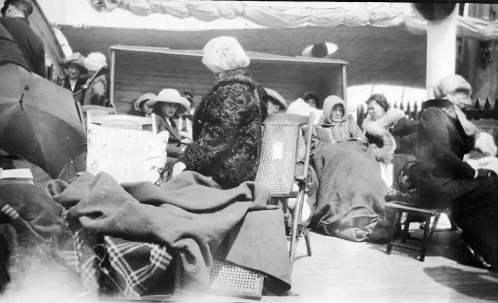
When the ocean liner Carpathia arrived at the spot in the North Atlantic ocean where Titanic sank, all the rescuers saw by the light of the moon was some wreckage and lifeboats with passengers. Many of the passengers had come up on deck in their nightclothes from their bunks aboard Titanic, and they were totally unprepared to climb directly into the lifeboats. The survivors were struck by the cold outdoor temperature, and they were suffering from exposure, extreme stress and shock by the time Carpathia arrived on the scene. The rescue ship was able to pick up 705 survivors, and as they boarded, they tossed their life vests into piles on the deck and were handed heavy, warm clothes by Carpathia's sympathetic passengers. (Photo courtesy of the National Museum of American History, Kenneth E. Behring Center)
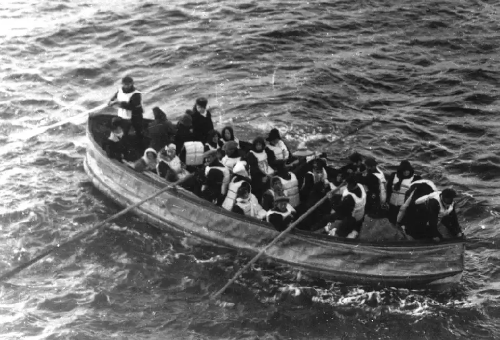
This photograph was taken by a passenger of the Carpathia, the ship that received the Titanic's distress signal and came to rescue the survivors. It shows survivors of the sinking of the Titanic in a notably sparse lifeboat. (Source: National Archives Online Public Access )
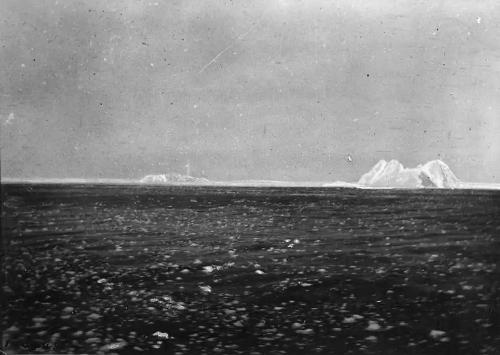
The Titanic struck a North Atlantic iceberg at 11:40 p.m. in the evening of April 14, 1912 at a speed of 20.5 knots (23.6 MPH). The berg scraped along the starboard or right side of the hull below the waterline, slicing open the hull between five of the adjacent watertight compartments. If only one or two of the compartments had been opened, Titanic might have stayed afloat, but when so many were sliced open, the watertight integrity of the entire forward section of the hull was fatally breached. Titanic slipped below the waves at 2:20 a.m. on April 15. The Cunard Liner RMS Carpathia arrived at the scene around two hours after Titanic sank, finding only a few lifeboats and no survivors in the 28 degrees Fahrenheit water. Bernice Palmer took this picture of the iceberg identified as the one which sank Titanic, by the survivors who climbed aboard Carpathia. The large iceberg is surrounded by smaller ice floes, indicating how far north in the Atlantic Ocean the tragedy struck. (Photo by Bernice Palmer, courtesy of the National Museum of American History, Kenneth E. Behring Center)

Bernie Palmer sold rights to her Titanic iceberg and survivor pictures to Underwood & Underwood of New York for only $10.00, not knowing any better. This picture identifies the young facing couple as honeymooners Mr. & Mrs. George A. Harder of Brooklyn, New York. The woman with her back to Bernie's Brownie camera is Mrs. Charles M. Hayes; her husband was President of the Grand Trunk Railway. He died in the shipwreck, but Mrs. Hayes and her two daughters were rescued by Carpathia. (Photo by Bernie Palmer, courtesy of the National Museum of American History, Kenneth E. Behring Center)
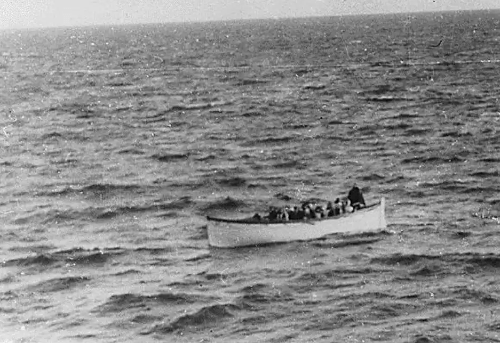
Over two hours after the disaster the RMS Carpathia arrived in the area and began rescuing survivors from their lifeboats.(Photo courtesy of The U.S. National Archives and Records Administration)
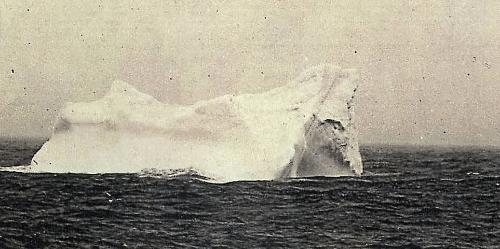
According to the BBC, this is a photograph of the iceberg that sank the Titanic, taken by Stephan Rehorek. If you look closely you can see traces of paint from the side of the ship left behind on the iceberg. Stephan Rehorek was a passenger on a ship that sailed through the waters where the Titanic sank on April 20th aboard the Bremen. Once in the area of the disaster, the people on board could see wreckage and the bodies of more than a hundred victims floating in the water. (Photo by Stephan Rehorek, Image Source: Wikimedia
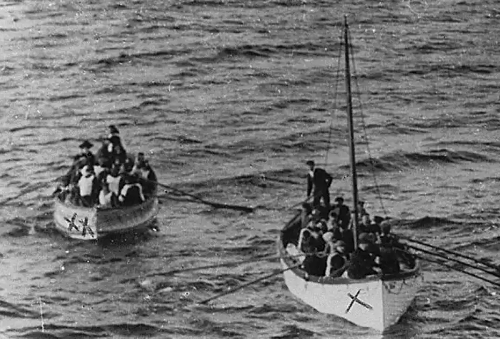
Less than a third of those aboard survived the disaster. Some survivors died shortly afterwards; injuries and the effects of exposure caused the deaths of several of those brought aboard Carpathia. (Photo courtesy of The U.S. National Archives and Records Administration)
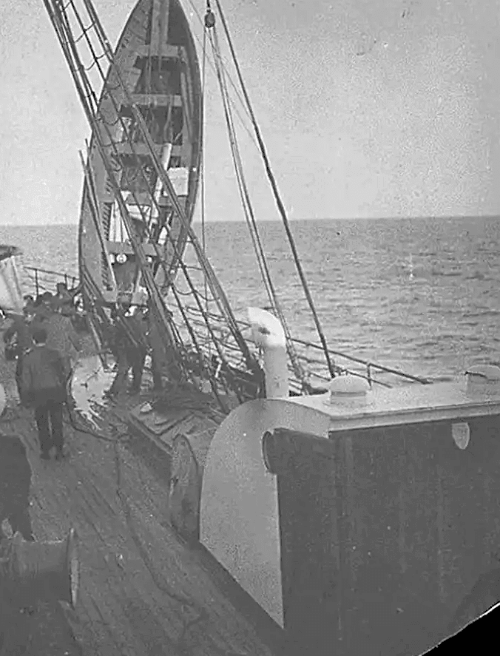
From the Encyclopaedia Britannica: Although the Titanic's number of lifeboats exceeded that required by the British Board of Trade, its 20 boats could carry only 1,178 people, far short of the total number of passengers. This problem was exacerbated by lifeboats being launched well below capacity, because crewmen worried that the davits would not be able to support the weight of a fully loaded boat. Lifeboat number 7, which was the first to leave the Titanic, held only about 27 people, though it had space for 65. In the end, only 705 people would be rescued in lifeboats. (Photograph courtesy of The U.S. National Archives and Records Administration)

Titanic's lifeboats at the White Star Lines' Pier 54 in New York City after sinking. Image Source: Wikipedia
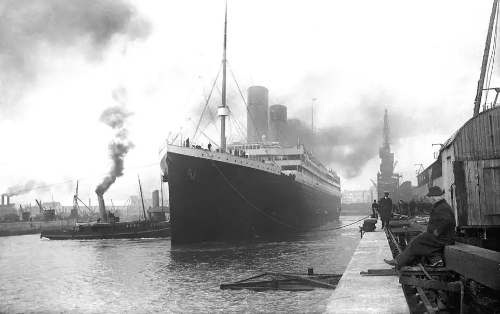
Titanic's passengers numbered around 1,317 people: 324 in First Class, 284 in Second Class and 709 in Third Class. There were 107 children aboard, the largest number of whom were in Third Class. The ship was considerably under capacity on her maiden voyage, as she could accommodate 2,566 passengers. Image Source: Wikipedia
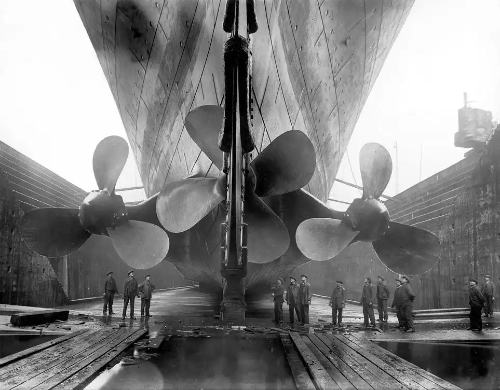
According to testimony given afterward at approximately 11:40 p.m., April 14, 1912 about 400 nautical miles (740 km) south of Newfoundland, Canada, an iceberg was sighted, and the bridge was notified. First Officer William Murdoch ordered both the ship “hard-a-starboard” (to the right) and the engines reversed. The Titanic began to turn, but it was too close to avoid a collision. By reversing the engines, Murdoch actually caused the Titanic to turn slower than if it had been moving at its original speed. Most experts believe the ship would have survived if it had hit the iceberg head-on. Image Source: Wikipedia
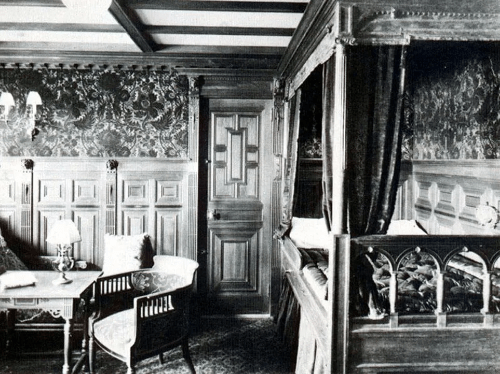
Stateroom B-59, decorated in Old Dutch style. Image Source: Wikipedia
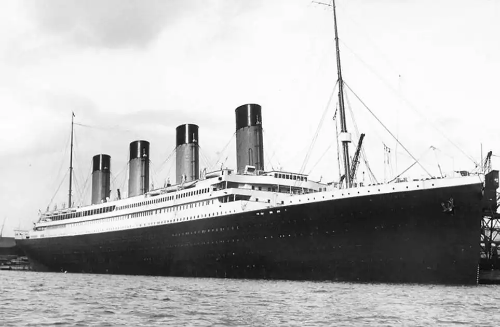
There were stark differences in the survival rates of the different classes aboard Titanic. Although only 3 percent of First-class women were lost, 54 percent of women in Third class died. Similarly, five of six First-class and all Second-class children survived, but 52 of the 79 in Third class children perished. Source: Wikipedia
